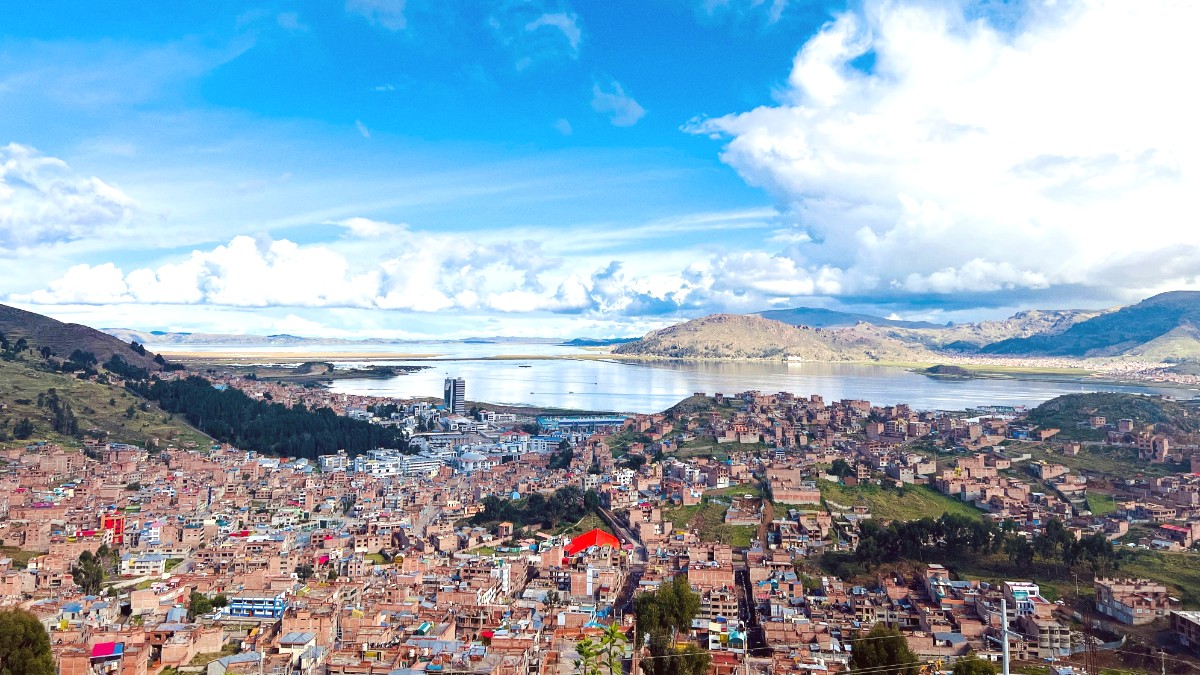
Lake Titicaca, Peru
Dry Season (May to October): This period generally functions as the prime time to visit. Days are sunny and clear, with average high temperatures ranging from 15°C to 18°C (59°F to 64°F). Nights are much colder, often dropping below freezing, with averages between -5°C and 0°C (23°F to 32°F). Precipitation remains very low, with minimal rainfall. Abundant sunshine brings clear views of the lake and surrounding mountains.
Wet Season (November to April): Expect slightly warmer days, with average highs around 16°C to 19°C (61°F to 66°F). Nights are less cold but still chilly, averaging 0°C to 5°C (32°F to 41°F). Higher rainfall occurs, with January and February experiencing the most rain. Rain typically arrives in the afternoon and may be heavy, but usually does not last all day. More frequent cloudy days occur.
Citizens of many countries, including the United States, Canada, most Western European countries, Australia, and New Zealand, do not need a visa for tourist stays up to 90 or 183 days (nationality dependent) within a 365-day period. This permit typically issues upon arrival.
For other nationalities, check the Peruvian Ministry of Foreign Affairs website or your nearest Peruvian embassy/consulate for specific requirements. Application processes vary. Your passport must remain valid for at least six months beyond your planned departure date. Immigration officials issue a Tourist Card (Tarjeta Andina de Migración - TAM) upon your arrival; retain this card, departure requires it. Peru charges no general entry fees for tourists upon arrival. No special permits obtain for general tourism in Puno or the Peruvian side of Lake Titicaca.
Keep these secure
At least six months beyond your departure date.
Retain this card; departure requires it.
Check your nationality
Many countries, including US, Canada, EU. Up to 90/183 days.
Verify specific requirements with Peruvian embassy.
No special needs for Puno
No mandatory vaccinations for general travel to Puno.
None needed for general Puno tourism (unlike Inca Trail).
The official currency is the Peruvian Sol (PEN), symbol S/. ATMs are widely available in Puno's city center, offering a convenient way to obtain local currency. Inform your bank of travel plans. Casas de Cambio (Exchange Houses) provide competitive rates and are generally secure. Banks also exchange currency, but often have longer queues. Larger hotels, restaurants, and shops accept credit cards (Visa and Mastercard common). Carry some cash for smaller vendors and markets.
Tipping in restaurants is welcomed but not mandatory; 5-10% for good service in mid-range to upscale places is common. For street food, tipping is not expected. Tour guides appreciate tips; S/. 10-30 per person for a full-day guide is a good guide. Taxi drivers typically do not receive tips unless they offer exceptional service. For hotel staff, S/. 2-5 for porters or housekeepers is appropriate.
S/. 80 - S/. 150 ($20 - $40 USD) - Hostel, local markets, walking/colectivos, basic tours.
S/. 150 - S/. 300 ($40 - $80 USD) - Mid-range hotel, casual restaurants, taxis, full-day tours.
S/. 300+ ($80+ USD) - High-end hotel, fine dining, private transfers/tours.
Hostel Dorm: S/. 30-50, Budget Hotel: S/. 60-100, Mid-range: S/. 100-200, Luxury: S/. 200+.
Breakfast: S/. 8-20, Lunch (Menú del Día): S/. 10-25, Dinner: S/. 25-60.
Puno, at high elevation, merits careful attention to health and safety. Acclimatization to altitude is the main concern.
Puno's high elevation is the main health concern. Symptoms include headache, nausea, dizziness, fatigue, shortness of breath, and sleep difficulty.
Practice good food and water hygiene. Tap water in Puno is NOT safe for drinking. Always drink Bottled water. Consider a Portable water filter or purification tablets.
Puno has public and private hospitals. Clinica Americana (private) generally receives preference from tourists for quicker service. Pharmacies (`Farmacias`) are abundant and offer many common medications over-the-counter.
Puno does not experience monsoons or hurricanes. Other weather factors do merit attention.
While daily highs are moderate, nights can be extremely cold, especially in the dry season. Frost is common. Pack layered clothing to manage these temperature swings.
Peru sits in an active seismic zone. While major earthquakes are rare in Puno, minor tremors can occur. Know your hotel's evacuation plan. During the wet season (Dec-Mar), heavy rains sometimes cause localized flooding or landslides, potentially affecting road travel.
Due to high altitude, UV radiation carries strength. Sunburn occurs quickly.
Use high-SPF Sunscreen.
Do not underestimate the sun's intensity.
High altitude environment naturally dehydrates the body faster.
Drink plenty of water throughout the day.
Avoid excessive alcohol or sugary drinks.
Significant temperature swings between day and night characterize the climate.
Pack versatile layers for various conditions.
Single heavy jackets alone fall short.
| Category | Item | Price Range (approx. USD) |
|---|---|---|
| Attractions | Uros Islands Tour (half-day) | S/. 30-50 for boat, S/. 10-15 island entrance ($8-15) |
| Attractions | Uros, Taquile, Amantani Tour (full-day) | S/. 70-120 for boat, S/. 5-10 per island ($18-30) |
| Transportation | Local Taxi ride (within Puno) | S/. 5-10 ($1.50-3) |